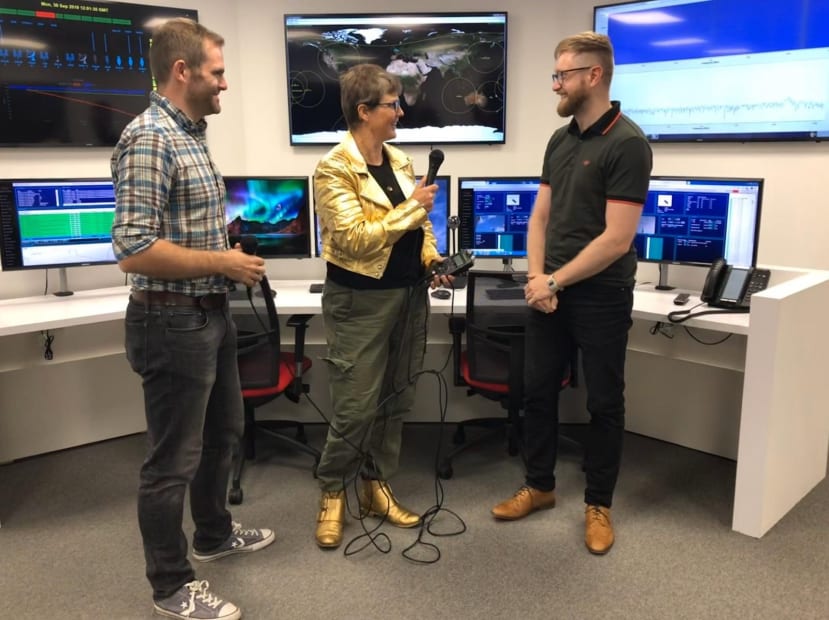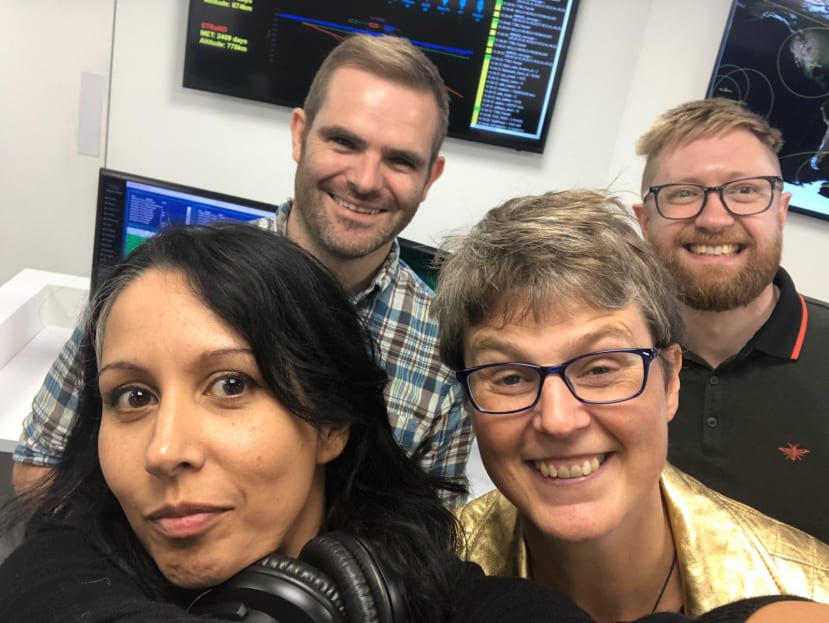The Engineering Edge – lasers and atomic clocks
Follow articleHow do you feel about this article? Help us to provide better content for you.
Thank you! Your feedback has been received.
There was a problem submitting your feedback, please try again later.
What do you think of this article?
Spacecraft need clocks to help them navigate around the solar system. Currently, these are usually microwave atomic clocks – which are big, bulky and expensive. They are also susceptible to environmental conditions such as heat, radiation and magnetic fields.

A team at Surrey Space Centre is developing a laser atomic clock that is lighter, cheaper and much more accurate than microwave atomic clocks. And it uses everyday technology. I went to find out more with The Engineering Edge Podcast:
I was very excited to be invited in to the Surrey Space Centre Ground Station – with its racks of radios and computers and huge screens where the current position of various satellites are plotted. In the photo below I am grinning so much my eyes are almost closed! With me are Becky Singh, the producer for this episode of The Engineering Edge, behind her is Dr. Peter Nisbet-Jones, a physicist working with the team at Surrey, and behind me is Dr. Chris Bridges, an academic at the site.

Chris Bridges has his fingers in many pies. And Raspberry Pis. He was one of the people who inspired me to make the Crowd-Sourced Satellite Ground Station SATNOGS project.
He also was involved at the beginning of the Astro Pi competition and puts Raspberry Pis into miniature satellites called CubeSats.
He was the supervisor to Peter when he did a Masters at Surrey, and this led to them teaming up to work on their latest project.
Peter worked as a physicist for many years. He worked on laser atomic clocks – but at the moment they are all experimental – and very sensitive. If someone sneezes near one, it needs to be recalibrated. Peter thought there must be a better way to make atomic clocks and sensors, so he did a Masters at Surrey Space Centre, where he came up with the idea of using everyday technology to make small, robust, inexpensive laser stabilised atomic clocks.
The best ground-based laser atomic clocks at the moment would give a GPS satellite five orders of magnitude better accuracy than the microwave atomic clocks that are currently in space – a million times improvement. However, the ground-based clocks wouldn't survive space for very long - let alone being launched in a rocket.
Laser atomic clocks not only would help in spacecraft, but they help develop precise sensors of fundamental physics – and can be used to see how quantum mechanics and general relativity are connected. (See also my blog on Quantum computers.)
The project they are working on will give physicists a new tool of a laser atomic clock for use in their experiments, rather than the current status when making a laser atomic clock *is* the experiment.
After not being allowed to push any buttons in the Ground Station, Peter and Chris took me into the lab. Sorry, no photos allowed.
In the lab, I was shown a prototype of the stabilised laser built by Peter. It was a lot smaller than I expected – roughly the size of a couple of computer keyboards and about 3 inches (7.5cm) deep.
The two key parts are the laser and the optoelectronics side and the digital side – an FPGA and temperature controller. All the parts are commercially available – the lasers are used in those green boxes on the side of UK roads that house the rat's nest of wires that give us fibre broadband to our houses. They have already, therefore, proved to be reliable and sturdy. So, and this is the very exciting bit, I could make one myself! Well, I could easily procure the parts. The programming of the FPGA is another matter though.
This use of everyday technology to make stabilised laser atomic clocks could open so many doors and answer questions that humans have been pondering over for years. And all because a physicist wanted something and went out of his way to make it. Wow!


